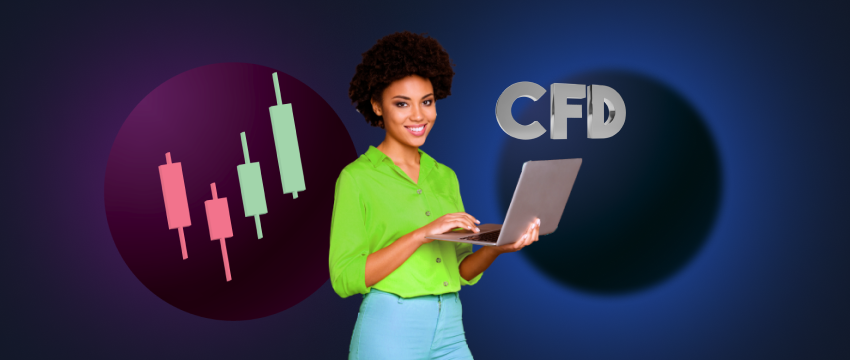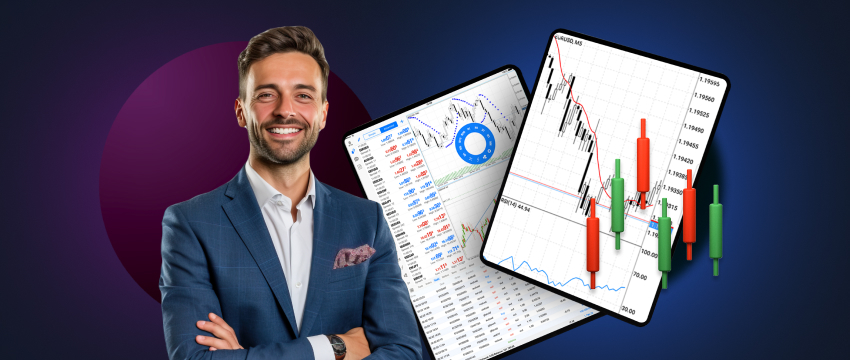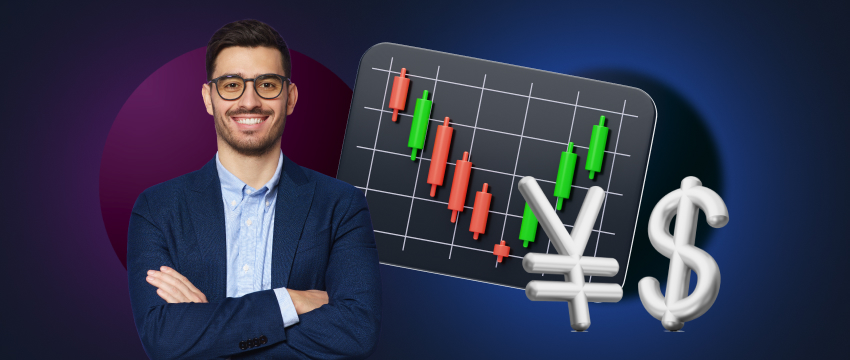CFD trading has risen in popularity in recent years despite its inherent risks. It’s a widely used form of trading, especially amongst day traders looking to make quick gains from the price movements of multiple underlying assets.
Professional traders are likely to consider CFDs as they allow for higher returns with less investment through leverage. Many beginners may misuse leverage and end up increasing losses instead of profits due to inexperience or lack of understanding. In contrast, when used correctly by professionals, CFDs have the potential to be a powerful tool for maximising profits.
However, that being said, CFD trading is incredibly high risk, with a low success rate. In fact, it has been said that 82% of CFD traders lose their money. This highlights the importance of risk management techniques, skill, understanding, and knowledge to mitigate large losses.
But, regardless of the challenges, let’s take a small deep dive into why professionals may be drawn to CFD trading.

Why CFD trading may be good for professionals
1. Handling larger value positions
The use of leverage in CFD trading is very common. They are some of the most highly leverage financial derivatives in fact. But what does this actually mean? Well, making use of what is essentially borrowed funds, a trader is able to open larger value positions without having to tie up lots of their own money. In turn, the trader is able to execute a higher volume of trades, thereby increasing the potential for making bigger gains.
But, and not a small but at that, leverage comes with it copious levels of risk. Because while it can amplify profitability, it can also magnify losses. Hugely so. And often times, these losses are totally unexpected, catching traders off guard and causing them to lose money that they cannot afford.
This is what makes a robust understanding of how leverage works so vital. It also makes the need for risk management tools vital for a trader to safeguard their funds. Two key tools in this endeavor are stop loss and take profit orders.
- A stop loss order will automatically close a position when a specified level of loss is reached.
- A take profit order will also automatically close a position but only once it hits a specific profit level.
Both these tools seek to control risk and reduce the potential for an exponential loss of money.
2. Variety of CFD trading markets
Trading CFDs is an excellent way to diversify ones portfolio. This is because they give traders a way to access a wide range of markets. You see, every CFD has an underlying asset and the trader will speculate on the price movement of that asset to make a profit. In fact, the trader is not required to take ownership of the asset. Instead, they merely need to try and establish the direction the asset price will move in an attempt to make gains.
Examples of underlying assets include currency pairs, commodities, stocks, metals, indices, futures, and where available, even cryptocurrencies. Having the ability to invest in more than one type of CFD not only opens up more trading opportunities, it also spreads risk. Put simply, by spreading investments across various asset classes, if one asset’s price moves unfavorably, the trader won’t suffer as much loss because they have other positions to rely on.

3. Going long or short
CFD trading enables a trader to take long or short positions, depending on market conditions. By going long, the trader will purchase the CFD as he or she anticipates that its underlying asset price will increase. In the event that the price rises, the contract is sold at a higher price and a profit is made. In CFD trading, going short involves selling a CFD contract if the trader speculates that the underlying asset’s price will decrease.
The decision to go long or short in CFD trading ultimately depends on several factors. This includes
- market volatility
- estratégia de negociação
- level of risk the trader is willing to take on
- the trader’s analysis of the asset’s price movements.

Choosing the right market
The best market for CFD trading is ultimately down to:
Level of liquidity
- This is in reference to how easy it is to buy or sell CFDs in the market. The level of liquidity usually depends on the specific asset. For e.g., currency pairs or stocks usually exhibit higher liquidity levels because there are a larger number of traders actively participating in these markets. This makes it easer to execute trades (entry and exit).
Timeframe
- This refers to how much time you’re willing to commit to CFD trading, and your ability to trade in different trading sessions. Remember that trading outcomes are impacted by several factors, particular economic announcements and releases. Sometimes the impact will be positive, other times not so much. Having the ability to react to any global news or events at any time to mitigate poor trade performance and capital loss is crucial.
Tolerância ao risco
- Choosing a CFD trading market does also depend on the level of risk you’re willing to incur. Some asset classes are more volatile than others so, which is further aggravated by one’s use of leverage. Ensure you take on a measure of risk that best aligns with your budget, skills and experience.
Commitment to learning
- Anyone engaging in the CFD markets must have a good idea of how they operate. Regardless of whether you are a beginner trader or a seasoned professional, ensuring you are are always expanding your scope of knowledge is key. There are many ways that this can be achieved due to the abundance of learning resources online. In addition to what can be found on the internet, brokers are another great way to access educational resources. For example, T4Trade’s Academy provides traders with webinars, podcasts, videos-on-demand, Live TV and even an innovative real time Economic Calender. These are delivered by an expert team of researchers and analysts, and aimed to improve a trader’s trading related acumen and skills. The T4Trade blog is also a great learning tool that covers many CFD trading related topics, to help traders make more informed trading decisions.
Demo Trading Account
It’s clear as to why CFD trading could be good for professionals. Regardless of ones depth o knowledge however, ensuring that you remain skilled in CFD trading takes constant practice and learning. One of the most practical ways to do this is by using a demo trading account. But how?
- Well, firstly, a demo account is a simulated trading environment in which you will get exposure to real life market and trading conditions.
- Secondly, using virtual funds, you can execute your CFD trading strategies to ascertain which is more likely to achieve success. You can then measure outcomes as well as identify strengths and weaknesses, and then adjust your strategy if required.
- Third, a demo trading account also helps you acquire the skills needed to navigate the challenges of live CFD trading, without putting your own money at risk.
- Fourth, you will also get a btter feel for the trading platform that you’ll inevitably end up using when you start CFD trading for real. This includes learning how use all its core features and functionalities, in particular technical and fundamental analysis.
Consider signing up for T4Trade’s demo trading account to bolster your skills and become a more strategic trader. Once you’ve gained sufficient experience, consider moving to live trading. With T4Trade, you can enjoy flexible trading conditions, competitive spreads, quick trade executions, easy withdrawals/deposits, and much more.
AVISO LEGAL: A informação disposta não deve ser interpretada como consultoria financeira ou recomendação de investimento, sendo apresentada apenas para fins de comunicação e marketing.




